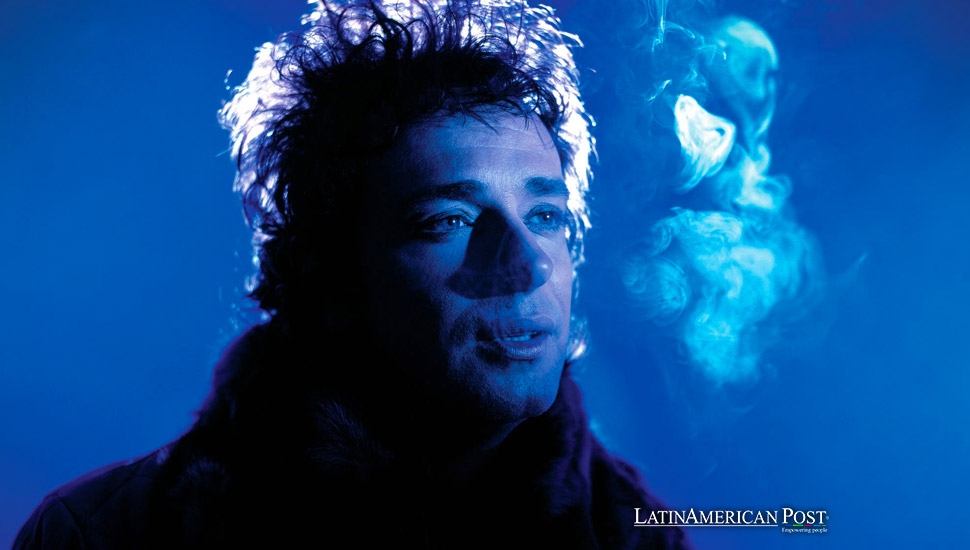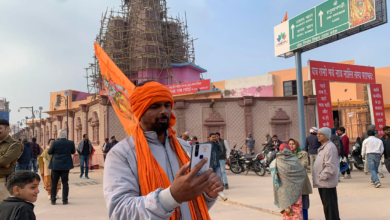Gustavo Cerati: A Decade Without Latin America’s Rock Icon

Ten years after his death, Gustavo Cerati’s music and legacy continue to shape Latin American rock. From Soda Stereo’s timeless hits to his pioneering solo career, Cerati’s influence remains undeniable, inspiring new generations across the continent and beyond.
On September 4, 2014, Latin America lost one of its most iconic musicians, Gustavo Cerati. The frontman of Soda Stereo, Cerati helped revolutionize the Latin American music scene, blending rock with poetic lyricism and creating songs that transcended borders and generations. A decade after his passing, his music resonates in Argentina and across the continent. Cerati’s artistry and innovation solidified his place in history as a pivotal figure in the rise of Spanish-language rock.
While the world may have lost his voice ten years ago, the echoes of his melodies remain, carried on by fans, musicians, and cultural tributes alike. Cerati’s impact is felt everywhere, from the streets of Buenos Aires, where murals and tributes to him stand tall, to the playlists of millions who still sing along to “De música ligera,” “En la Ciudad de la Furia,” and many more.
The Rise of Soda Stereo
Gustavo Cerati’s rise to stardom began in 1982 when he, along with Zeta Bosio and Charly Alberti, formed Soda Stereo. This Argentine trio would go on to redefine what it meant to be a rock band in Latin America, breaking away from the traditional sounds of local music to embrace a fusion of new wave, post-punk, and synth-pop. Inspired by British bands like The Police and Duran Duran, Soda Stereo gave voice to a new generation of Latin American youth eager for change—both musically and culturally.
Soda Stereo’s debut self-titled album in 1984 introduced their unique sound to the public, but their third album, Signos (1986), catapulted them to regional stardom. Their song “Persiana Americana” became an anthem across the continent, with its infectious riff and rebellious energy capturing the hearts of fans from Argentina to Mexico.
But Doble Vida (1988) cemented Soda Stereo’s place as a pioneer of Latin rock. The album’s standout track, “En la Ciudad de la Furia,” remains one of the most celebrated songs in the band’s catalog. Cerati’s haunting lyrics and the dark, atmospheric sound painted a vivid picture of urban isolation and existential yearning. The song became a radio hit and a cultural statement, speaking to the soul of cities like Buenos Aires, where Cerati was born and raised.
As Soda Stereo’s fame grew, so did their influence. The band embarked on extensive tours across Latin America, bringing their genre-defying sound to countries where Spanish-language rock had yet to emerge fully. Their tours in Mexico, Chile, and Colombia were met with sold-out venues and an ever-growing fanbase. Soda Stereo had become more than just a band—they embodied a new Latin American identity that embraced global rock influences while maintaining its distinct cultural roots.
By the time Soda Stereo released their final studio album, Sueño Stereo (1995), the band had already secured their legacy. The album’s success was fueled by the iconic single “De música ligera,” a song so universally loved that it became a staple at the band’s concerts, often used to close their performances with the famous final phrase “Gracias totales,” a phrase that Cerati would immortalize during their farewell tour in 1997.
Iconic Songs: Soundtracks of a Generation
Soda Stereo’s music was revolutionary, but Cerati’s ability to write timeless songs set him apart. His lyrics often ventured into the poetic and philosophical, resonating with listeners on a deeply emotional level. The success of songs like “Persiana Americana” and “De música ligera” was only the tip of the iceberg. Cerati’s ability to capture the complex feelings of love, loss, and existential questioning made him a voice for the generation that grew up during the turbulent 1980s and 1990s in Latin America.
“Prófugos,” one of the band’s early hits, was a perfect example of Cerati’s knack for storytelling. The song tells the tale of lovers on the run, desperate to escape societal norms and live freely. Its epic scope and urgent energy made it an instant classic. Similarly, “Signos,” with its dreamy synths and cryptic lyrics, showed Cerati’s ability to blend introspection with catchy pop sensibilities.
“En la Ciudad de la Furia” remains a song that epitomizes Cerati’s genius. The track, drenched in dark, moody atmospherics, speaks to the feeling of being an anonymous figure lost in the chaos of a bustling city. Cerati’s imagery of flying over the city, unseen by its inhabitants, resonates with anyone who has felt out of place in a world moving too fast. The accompanying music video, which features Cerati morphing into a winged creature, added to the song’s mythic quality.
But Cerati’s songwriting extended far beyond Soda Stereo. His solo work, mainly tracks from albums like Bocanada (1999) and Fuerza Natural (2009), further showcased his evolution as an artist. Songs like “Crimen,” a heartbreaking ballad about betrayal and guilt, and “Cactus,” a more introspective track that blends folk and electronic influences, revealed the depth of Cerati’s musical exploration. His ability to experiment while staying true to his signature style made him one of the most innovative musicians in the Latin rock scene.
A Solo Career That Redefined Boundaries
After Soda Stereo disbanded in 1997, Cerati was far from finished. If anything, his solo career allowed him to push his artistic boundaries even further. His first post-Soda album, Bocanada (1999), marked a stark departure from the rock-driven sound that had made him famous. Instead, Cerati embraced electronic music, incorporating ambient, trip-hop, and symphonic elements into his work.
Bocanada was a critical and commercial success, showing fans and critics alike that Cerati was a versatile artist who refused to be pigeonholed. Tracks like “Puente” and “Verbo Carne” demonstrated his ability to create lush soundscapes that transported listeners to new emotional territories. The album is regarded as one of the greatest Spanish-language albums ever and cemented Cerati’s reputation as a fearless innovator.
Cerati’s subsequent albums, including Siempre es Hoy (2002) and Ahí Vamos (2006), continued to explore different musical landscapes. He ventured into rock, pop, and electronic fusion, constantly evolving and challenging his audience. His ability to create immersive, multi-layered soundscapes made each album a unique experience.
However, Fuerza Natural (2009), his final solo album, captured the essence of Cerati’s artistic journey. Released just months before he suffered the stroke that would eventually take his life, the album was a celebration of nature, life, and introspection. Tracks like “Magia” and “Deja Vu” exude a spiritual energy, as if Cerati knew this would be his final musical offering.
In 2010, while performing in Venezuela during his Fuerza Natural tour, Cerati suffered a stroke that left him in a coma for four years before he died in 2014. His passing marked the end of an era in Latin American music, but his work continues to inspire musicians and fans alike. Today, his albums are studied and revered by artists seeking to understand how Cerati pushed the boundaries of what Spanish-language music could achieve.
A Decade Later: Cerati’s Enduring Legacy
Ten years after his death, Gustavo Cerati’s legacy is as strong as ever. His influence on Latin American music is immeasurable, with countless artists citing him as an inspiration. Cerati’s fingerprints are all over the current musical landscape, from alternative rock bands to pop stars.
Tributes to Cerati have been abundant, especially in his native Argentina. Fans still gather at his gravesite in Buenos Aires, leaving flowers, notes, and even guitar picks as a sign of their enduring love and respect. Murals of Cerati adorn the city’s walls, and every year on the anniversary of his death, concerts, and events are held in his honor. His music remains a staple on radio stations, and streaming platforms report millions of plays of his timeless hits.
In 2023, Soda Stereo’s legacy was further solidified with the release of Gracias Totales. This tribute concert reunited Zeta Bosio and Charly Alberti with guest musicians to celebrate Cerati’s life and work. The concert featured performances from artists such as Chris Martin of Coldplay and Rubén Albarrán of Café Tacvba, highlighting Cerati’s widespread influence across musical genres and continents.
Cerati’s importance in the rise of Spanish-language rock cannot be overstated. At a time when rock music was dominated by English-speaking artists, Cerati and Soda Stereo showed that Latin America could produce rock music that was just as innovative, powerful, and emotionally resonant. His poetic lyrics and sonic experimentation paved the way for future generations of Latin rock musicians, helping to legitimize and popularize Spanish-language rock on the global stage. Cerati’s influence reached far beyond Latin America, as his music became a bridge between cultures, proving that rock and roll could transcend language barriers and speak to universal human emotions.
The Lasting Impact of Gustavo Cerati
Gustavo Cerati’s impact on Latin American music cannot be measured solely by his chart-topping hits or sold-out concerts. His true legacy lies in how he redefined what it meant to be a Latin rock musician. By refusing to be constrained by musical trends or expectations, Cerati carved out a unique space in the music world where he was free to experiment, evolve, and innovate. His combination of rock, pop, and electronic elements created a new blueprint for Latin American artists, showing that pushing boundaries while staying true to one’s roots was possible.
For artists like Juanes, Shakira, and even newer acts like Zoé, Cerati’s influence is evident in their willingness to experiment and embrace eclectic musical styles. His commitment to creating music that is both artistically challenging and emotionally accessible continues to inspire musicians and fans alike.
Cerati’s music has only grown in stature in the decade since his death. Younger generations, perhaps too young to experience Soda Stereo at the height of their fame, are now discovering Cerati’s music through streaming platforms, tributes, and reissues of his albums. His lyrics, full of introspection and poetic beauty, resonate with listeners navigating life, love, and identity.
Cerati’s importance in the rise of Spanish-language rock cannot be overstated. He was more than just the frontman of Soda Stereo—he was a cultural icon who helped reshape Latin America’s musical landscape. His music provided the soundtrack for a generation, and his legacy lives on in every chord, every lyric, and every melody that continues to inspire.
A decade after his passing, Gustavo Cerati remains one of Latin America’s most influential and beloved musicians. His contributions to rock en español are unparalleled, and his willingness to explore new sounds and ideas set him apart as a true innovator. Cerati’s music, both with Soda Stereo and as a solo artist, transcends time, continuing to speak to listeners across generations and continents. Cerati’s influence on Latin American culture and music is undeniable, from his iconic songs to his visionary approach to music.
Also read: Mexican Legend Juan Gabriel’s Legacy Exhibited in Immersive Museum Experience
As fans worldwide commemorate the tenth anniversary of his death, one thing is clear: Gustavo Cerati is far from forgotten. His legacy continues to thrive, and his music remains vital to Latin American identity. As we listen to his timeless tracks and remember the passion he brought to his craft, we can only say, in Cerati’s words, “Gracias totales.”





